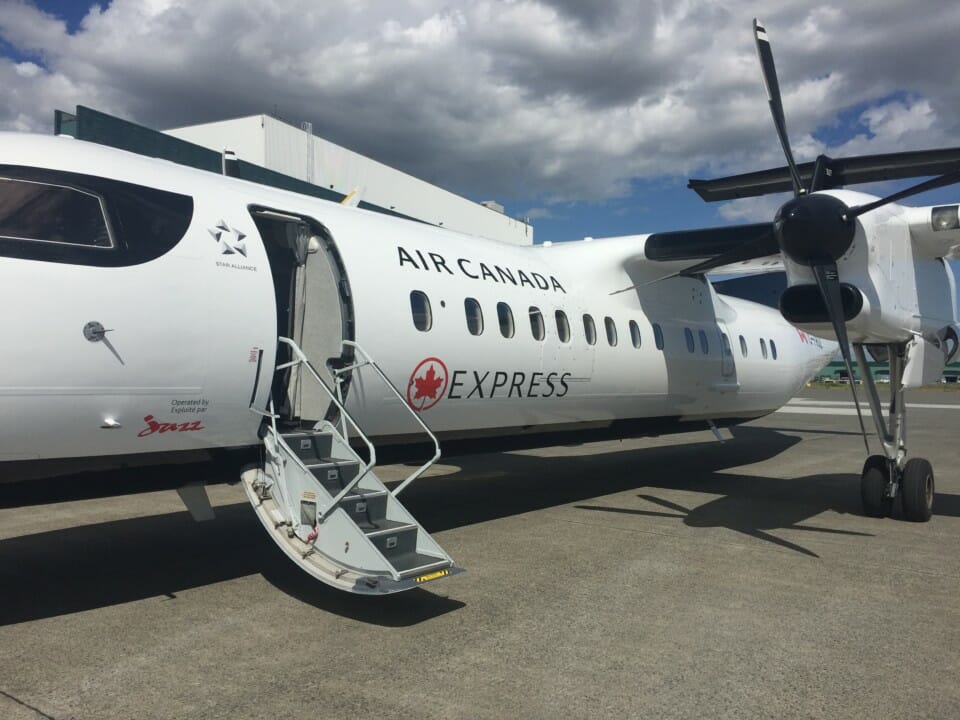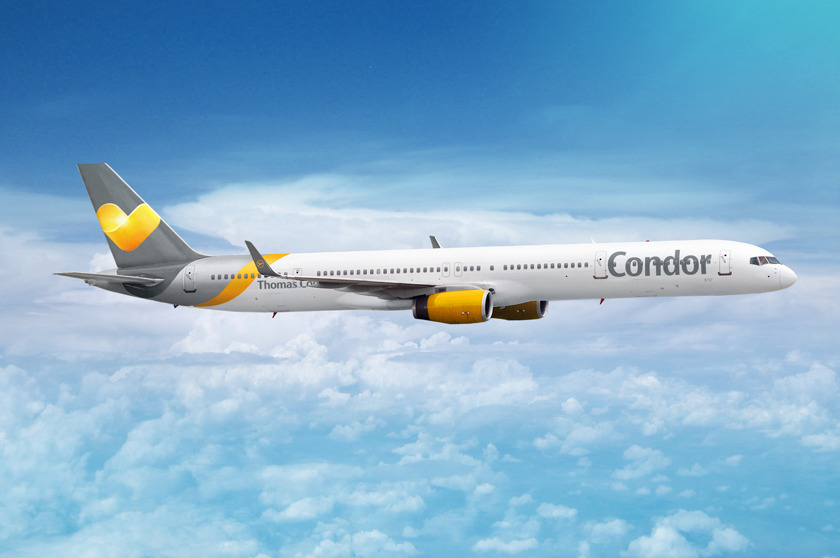Airfreight has overtaken passenger flights as revenue for the airlines. Airfreight has not seen the downturn in airline revenue like passenger flights but it has increased to transport medical supplies during the current situation. As a lifelong avgeek, here is something that I didn’t see coming – The Q400 turboprop freighter.
The Q400 Regional Aircraft
Anybody that has ever flown on a Q400 turboprop has an opinion about this aircraft – they either love it or hate it. This aircraft has been in airline service since 1984 when NorOntair put the Q400 in revenue service. By all accounts, this is an aircraft that should have ended with the newer designs of regional aircraft but it continues to live on. I wrote an updated post about the Q400 last year, you can read it here.
This regional aircraft began its life as the De Havilland Canada DHC-8 which is affectionately known as the “dash 8”. It began life as the DHC-8-100 seating just 37 passengers. Over time, the aircraft was stretched to the series 200, 300 and today, the 76 passenger series 400. The ownership of the aircraft manufacturer has changed several times over the decades but the Q400 is still flying daily on regional routes around the world.
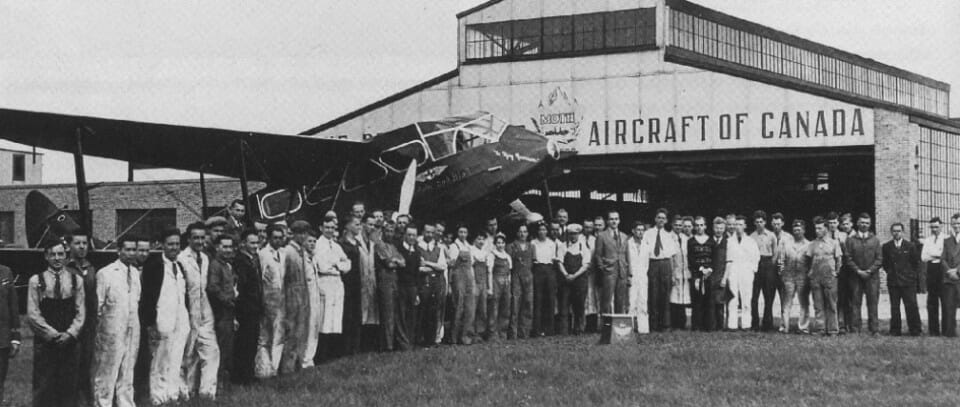
The aircraft was designed and originally built by De Havilland Canada but the days of the manufacturer were winding down. The ownership of the DHC-8/Q400 looks like this:
- Boeing bought De Havilland Canada to become Boeing Canada and manufactured the DHC-8 from 1985 – 1992,
- Bombardier bought De Havilland Canada, improving the DHC-8 and renaming it the Q400. Bombardier produced the aircraft from 1992 – 2019 and
- Longview Aviation Capital bought back the Q400 program in 2019 and brought back the De Havilland Canada name.
Longview Aviation subsidiary Viking Air Ltd., had previously purchased the rights to build and maintain the previous generations of De Havilland Canada aircraft. The aircraft will revert back to the original model designation of Dash 8-400.
Introducing The Dash 8-400 Simplified Package Freighter
The new De Havilland Canada has designed and obtained an airworthiness certificate for the Simplified Package Freighter (SPF). The design changes will enable the converted Dash 8-400 aircraft to be a quick change configuration using seat tracks in the passenger cabin. In the freighter configuration, the Dash 8-400 can handle 17 cargo stations with nets used to keep cargo from shifting during flight. The Dash 8-400 SPF can handle up to 1,150 cubic feet of cargo with a maximum payload weight of 17,960 pounds.
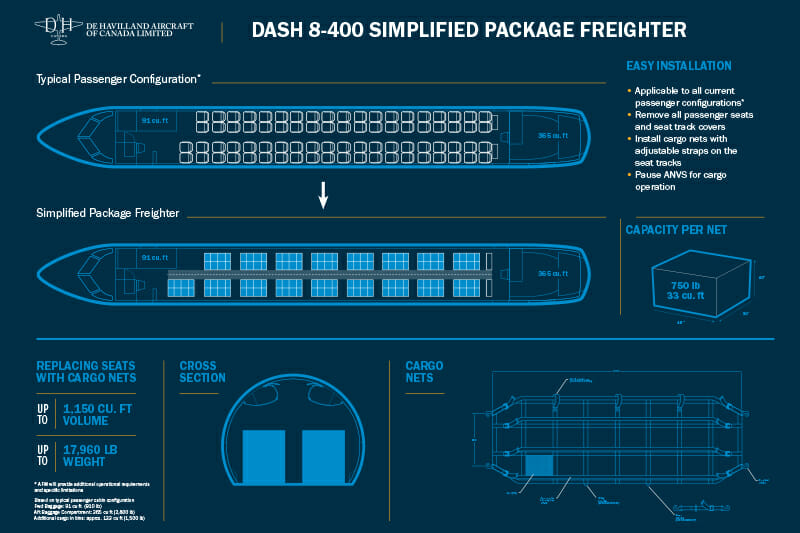
Jazz Aviation (Air Canada Express) Launches the Dash 8-400 SPF
Jazz Aviation which is a regional carrier for Air Canada became the launch customer for the Dash 8-400 SPF. Jazz has ordered 13 conversion kits from De Havilland Canada and they will be the exclusive supplier of all future Dash 8-400 modifications for Jazz Aviation.
“We are delighted to be the first operator for the Dash 8-400 Simplified Package Freighter and congratulate De Havilland Canada and Transport Canada on offering this sound solution,” said Randolph deGooyer, President, Jazz Aviation LP. “This innovative opportunity will allow us to redeploy aircraft while contributing to the collective fight against COVID-19 by supporting our customer – Air Canada – and the delivery of essential cargo.”
De Havilland Aircraft Company – A British Aircraft Pioneer
De Havilland Aircraft was started by Geoffery de Havilland on the outskirts of London, England in 1920. De Havilland Canada began in 1928 to build aircraft to operate in the harsh conditions in Canada. Over its decades of existence, the Company produced many military and commercial aircraft.
De Havilland actually designed and manufactured the first commercial jet airliner – the Comet. The Comet might have been a commercial success for De Havilland but a design defect caused many crashes of the Comet. The failure of the Comet was due to metal fatigue and cabin pressurization. It was discovered that the square passenger windows of the original Comet design created weak points in the fuselage. That is why aircraft windows have rounded corners. Metal fatigue was an unknown condition in the early days of aviation. By the time De Havilland corrected the problem, it was too late to save the airliner. The photo below shows a later Comet with oval windows.
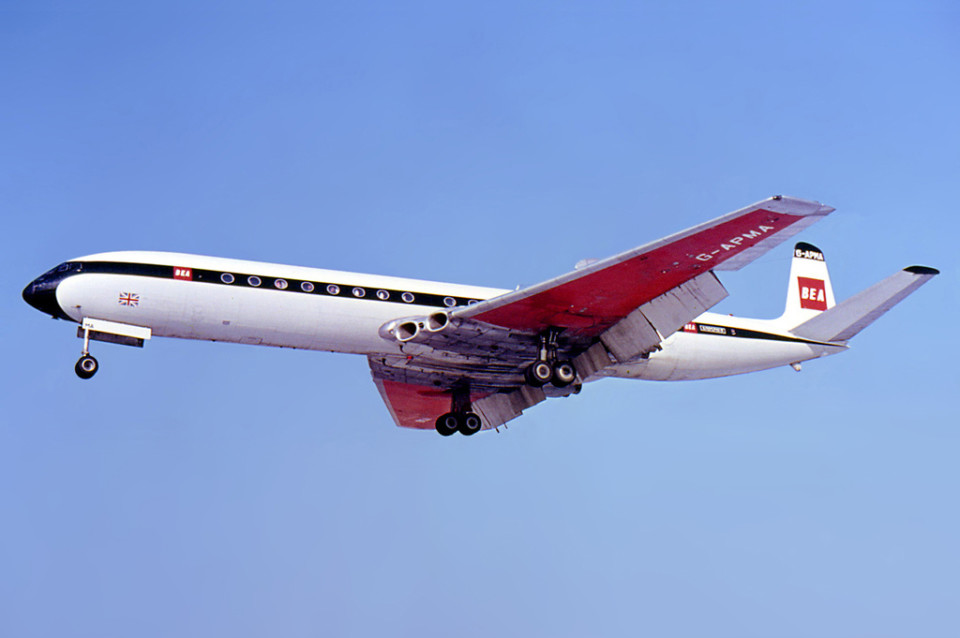
Final Thoughts
The Q400 or Dash 8-400 is the regional airliner that you either love or hate. The aircraft family has been flying since 1984 and built by a succession of ownership changes. Now when air freight is so important, this aircraft has been modified to be a quick-change freighter. The Canadian-built turboprop will continue to fly in service for regional air carriers for some time.

